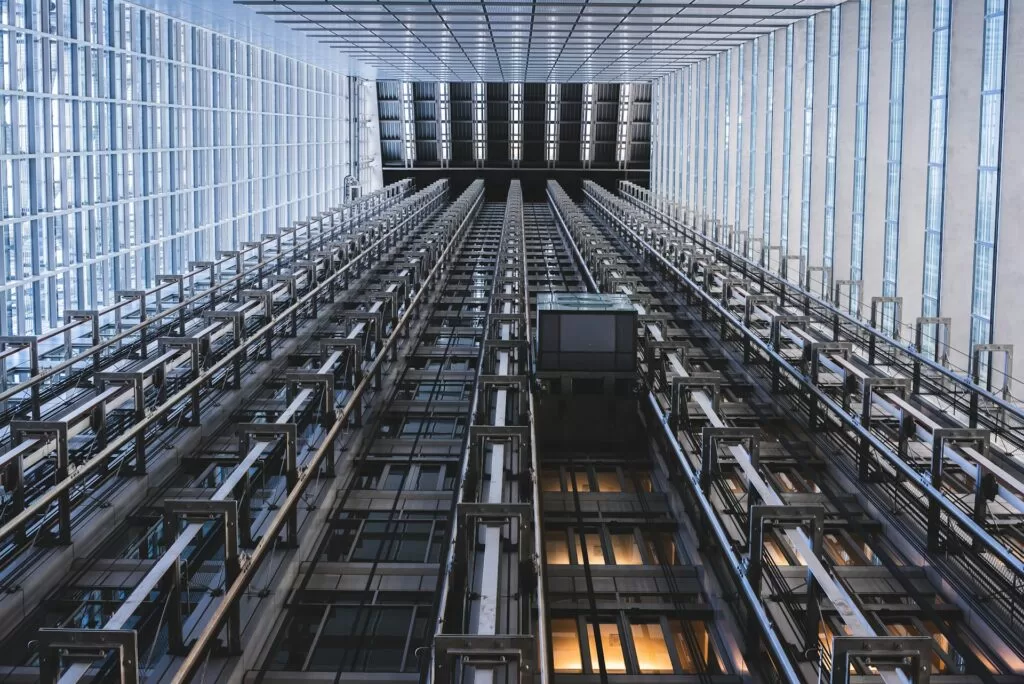Happy Eco News How High Efficiency Elevators Are Transforming Sustainable Building Design
Reading Time: 3 minutes
Elevator manufacturers adopt high efficiency elevator technology to reduce carbon footprint.
As industries worldwide seek sustainable solutions, the elevator sector is making significant strides toward reducing its environmental impact. With growing consumer demand for eco-friendly business practices, manufacturers are now prioritizing high efficiency elevator designs that use less energy and fewer materials.
A study by Aldermore Bank found that 42% of small and medium enterprises (SMEs) have already implemented sustainability initiatives. The elevator industry is following suit by investing in energy-efficient technology, smart systems, and renewable energy sources to lower carbon emissions while maintaining safety and cost-effectiveness.
Traditional elevators require significant materials and space, contributing to high resource consumption and waste. To address this, manufacturers are developing more compact designs that use fewer raw materials and reduce construction waste.
Another key advancement in sustainability is the adoption of smart elevator technology. These high efficiency elevators incorporate features such as regenerative braking, destination control systems, and automatic standby modes to optimize energy use.
Regenerative braking captures excess energy and converts it for reuse, reducing overall power consumption. Destination control systems group passengers traveling to the same floors, minimizing the number of trips and cutting energy waste. According to the Green City Times, these features enable smart elevators to use up to 30% less energy than traditional models.

The demand for smart elevators is growing rapidly. By 2032, the smart elevator market is expected to reach $32.58 billion, driven by the increasing push for energy-efficient infrastructure and sustainability-focused urban development.
Solar-powered elevators are another major step forward in reducing the carbon footprint of buildings. These elevators run on energy harnessed from photovoltaic panels, which store excess energy in batteries for use even when sunlight is unavailable.
Since their introduction in 2013, solar-powered elevators have proven to be as much as 60% more energy-efficient than hydraulic elevators. Cities with high solar radiation are particularly well-suited for this technology, as they can maximize the use of renewable energy to reduce electricity costs and reliance on fossil fuels. As solar technology continues to improve, these elevators are expected to become even more efficient and widely adopted in both commercial and residential buildings.
Understanding the energy savings of high-efficiency elevators requires comparing them with traditional models. Conventional hydraulic elevators consume significant power, especially in high-rise buildings where they operate frequently. In contrast, high-efficiency elevators integrate advanced technology to use up to 40% less electricity, significantly reducing operational costs and environmental impact over time.
For example, a traditional elevator in a mid-sized commercial building might use 10,000 kWh per year, whereas a smart elevator could reduce this to 6,000 kWh annually. This translates into hundreds of dollars in energy savings for building owners and contributes to lower greenhouse gas emissions.
Artificial intelligence (AI) is transforming the functionality of high efficiency elevators. AI-driven predictive maintenance systems analyze elevator performance data to detect potential malfunctions before they occur, preventing energy waste and costly repairs.
Automated control systems also enhance efficiency by adjusting elevator speed and scheduling based on real-time demand. For example, AI-powered destination dispatching minimizes unnecessary stops, reduces wait times, and optimizes energy consumption.
For businesses and homeowners looking to install a high efficiency elevator, several factors should be considered:
One is the energy ratings. Look for models with energy efficiency certifications such as LEED (Leadership in Energy and Environmental Design) or ISO 25745.
Secondly, consider technology features. Choose elevators with regenerative braking, AI-driven controls, and standby mode to maximize savings.
Finally, compare installation costs vs. long-term savings. While high efficiency elevators may have higher upfront costs, they often result in lower electricity bills and maintenance expenses over time.
The elevator industry is making steady progress in sustainability by integrating high efficiency elevator technology, compact designs, smart systems, and renewable energy sources. These innovations not only reduce energy consumption but also contribute to lower operational costs for businesses and homeowners.
With the ongoing demand for eco-friendly urban infrastructure, manufacturers are expected to continue investing in greener solutions. As technology advances, high efficiency elevators will play a crucial role in creating more sustainable cities while providing reliable and cost-effective transportation solutions.
The post How High Efficiency Elevators Are Transforming Sustainable Building Design appeared first on Happy Eco News.
